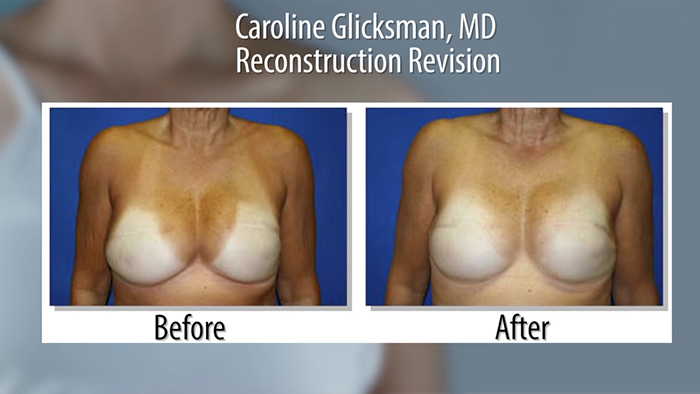Lumpectomy, mastectomy, chemotherapy and radiation – after each difficult battle that arises with breast cancer has been fought, the Women’s Health and Cancer Rights Act of 1998 (WHCRA) ensures a breast cancer survivor’s right to breast reconstruction through insurance coverage. If your insurance company covered the mastectomy, they must also cover the reconstructive procedures that follow. Coverage for breast reconstruction is not limited to one surgery, and it doesn’t have an expiration date. In fact, for many women, breast reconstruction is done in stages.
Revision Surgery Doesn’t Mean the Original Reconstruction or the Implant Failed
One surgeon who actively joined in the fight to achieve mandated coverage for breast reconstruction on behalf of cancer patients is plastic surgeon Dr. Caroline Glicksman. In her New Jersey practice Dr. Glicksman often sees patients who had their initial breast reconstruction done ten to fifteen years ago return for a revision reconstruction surgery. While the original reconstruction surgery may have gone perfectly, with the passing of time, both the patient and the implant age and change. These factors can lead to a desire or a need for a revision surgery down the road.
Revision to Achieve Symmetry After Aging
“A lot of patients are coming in, either my own patients, or patients from other surgeons, and they’ve aged. Some women may have been on tamoxifen for quite a few years, or other hormonal therapies and they may have gained weight,” shares Glicksman. “For those women who had only one breast reconstructed, the opposite breast continues to age, so whatever lift or technique was done years before to make their two breasts symmetric has now changed. They may want to now do a revision on both the reconstructed breast and the opposite breast.”
New Techniques, New Devices
Breast reconstruction surgery has advanced in recent years, both in technique and in the quality and types of devices available. Dr. Glicksman often uses newer shaped implants to achieve better symmetry between the breasts for her reconstruction patients. Newer implants also wrinkle and ripple less than older devices, offering some a more natural feel and appearance. She also combines implants with fat grafting during surgery. “Reconstruction now involves a combination of techniques, layering the harvested fat around the implant. The fat helps to soften the edges and visible folds, the things that many patients hated about their old implant. It can also help us really create a prettier balance between the two breasts,” says Glicksman.
Beautiful Breasts After Cancer Are Within Your Reach
The good news is breast cancer survivors have more choices than ever before when they decide to return to their surgeon for a revision procedure. There are more options to improve symmetry and the surgery for a revision is often a shorter procedure than their original reconstruction. Shorter surgery and anesthesia can help with a speedier recovery. “Revision reconstruction patients have an easier time the second time around,” shares Glicksman. “They also haven’t just received a diagnosis of breast cancer. They’re really doing something to create more aesthetically beautiful breasts, which is something we can do now, that we maybe weren’t able to do for them years before.”
















Facebook
Twitter
Instagram
YouTube
RSS